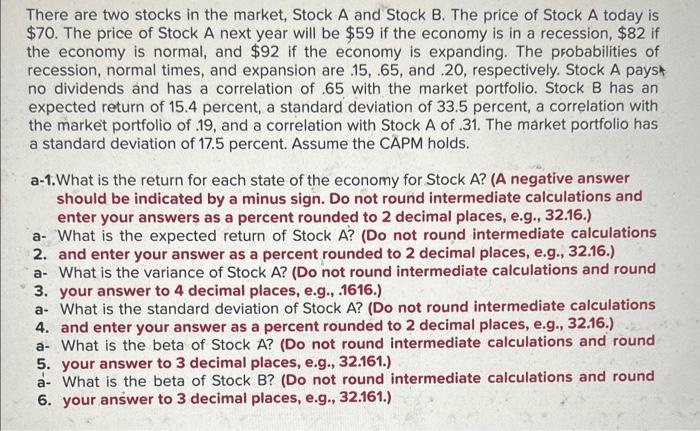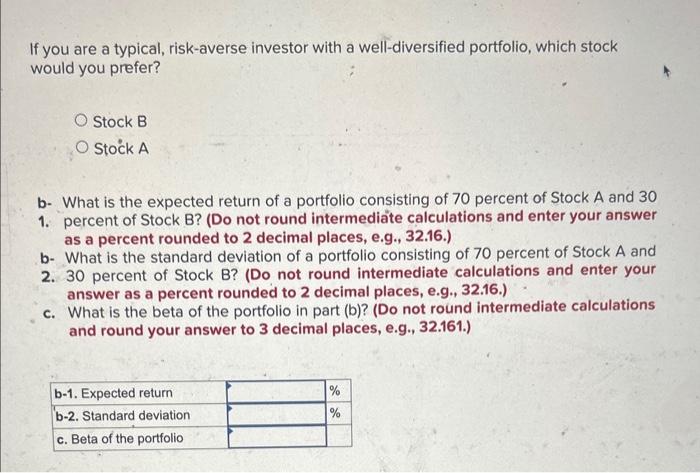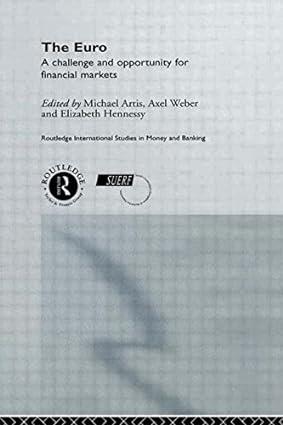There are two stocks in the market, Stock A and Stock B. The price of Stock A today is $70. The price of Stock A next year will be $59 if the economy is in a recession, $82 if the economy is normal, and $92 if the economy is expanding. The probabilities of recession, normal times, and expansion are .15,.65, and .20, respectively. Stock A pays no dividends and has a correlation of .65 with the market portfolio. Stock B has an expected return of 15.4 percent, a standard deviation of 33.5 percent, a correlation with the market portfolio of .19, and a correlation with Stock A of .31. The market portfolio has a standard deviation of 17.5 percent. Assume the CAPM holds. a-1. What is the return for each state of the economy for Stock A? (A negative answer should be indicated by a minus sign. Do not round intermediate calculations and enter your answers as a percent rounded to 2 decimal places, e.g., 32.16.) a- What is the expected return of Stock A? (Do not round intermediate calculations 2. and enter your answer as a percent rounded to 2 decimal places, e.g., 32.16.) a- What is the variance of Stock A? (Do not round intermediate calculations and round 3. your answer to 4 decimal places, e.g., .1616.) a- What is the standard deviation of Stock A? (Do not round intermediate calculations 4. and enter your answer as a percent rounded to 2 decimal places, e.g., 32.16.) a- What is the beta of Stock A? (Do not round intermediate calculations and round 5. your answer to 3 decimal places, e.g., 32.161.) a- What is the beta of Stock B? (Do not round intermediate calculations and round 6. your ansiwer to 3 decimal places, e.g., 32.161.) \begin{tabular}{|l|l|l|} \hline a-1. Recession & & % \\ \hline a-1. Normal & & % \\ \hline a-1. Expansion & & % \\ \hline a-2. Expected return & & % \\ \hline a-3. Variance & & \\ \hline a-4. Standard deviation & & \\ \hline a-5. Beta of Stock A & & \\ \hline a-6. Beta of Stock B & & \\ \hline \end{tabular} If you are a typical, risk-averse investor with a well-diversified portfolio, which stock would you prefer? Stock B Stock A b. What is the expected return of a portfolio consisting of 70 percent of Stock A and 30 1. percent of Stock B? (Do not round intermedite calculations and enter your answer as a percent rounded to 2 decimal places, e.g., 32.16.) b- What is the standard deviation of a portfolio consisting of 70 percent of Stock A and 2. 30 percent of Stock B? (Do not round intermediate calculations and enter your answer as a percent rounded to 2 decimal places, e.g., 32.16.) c. What is the beta of the portfolio in part (b)? (Do not round intermediate calculations and round your answer to 3 decimal places, e.g., 32.161.)









